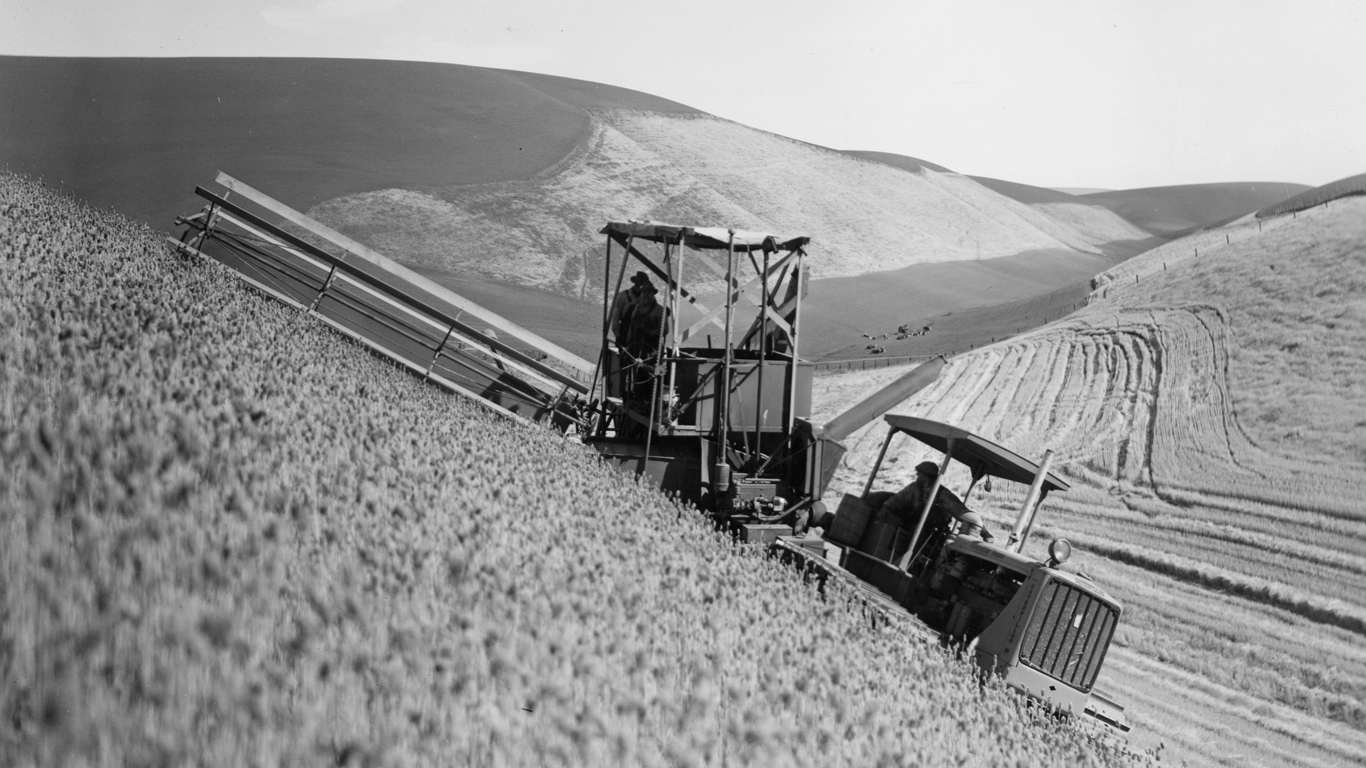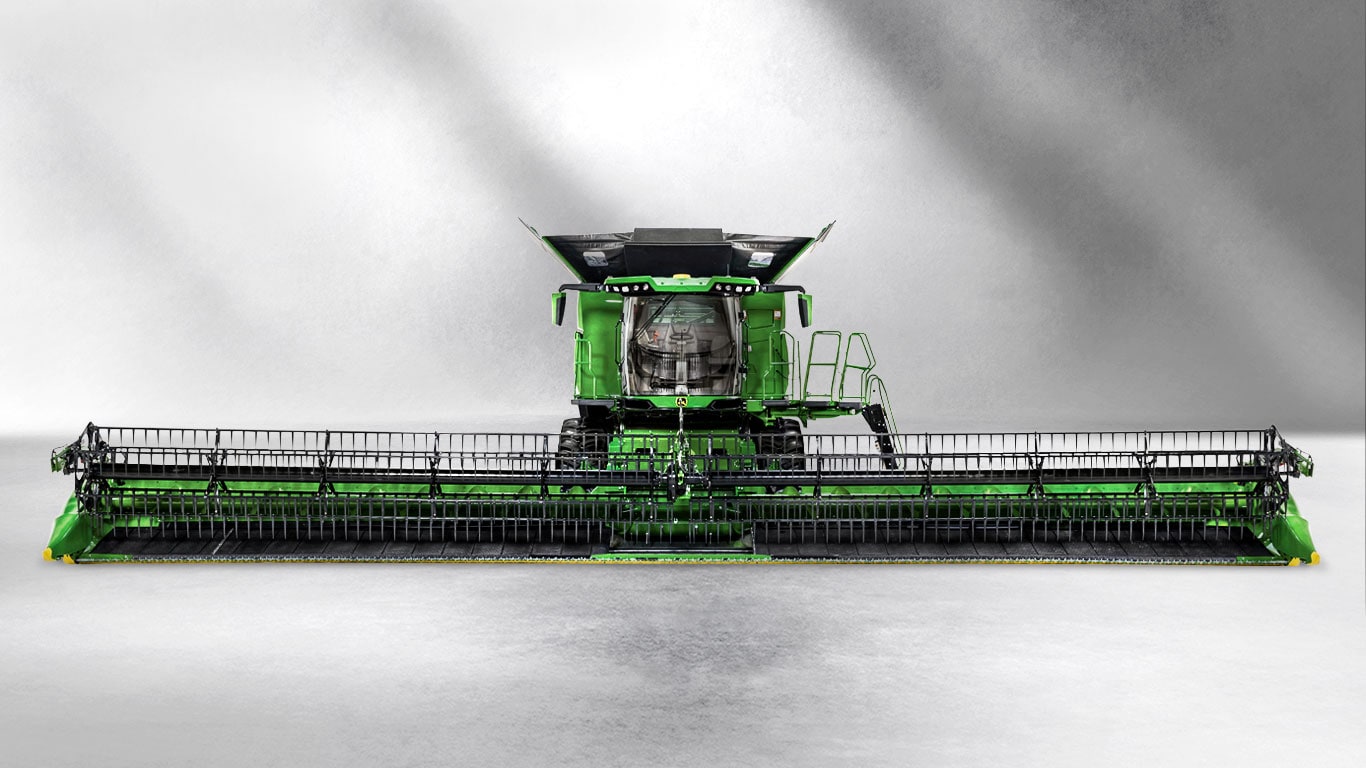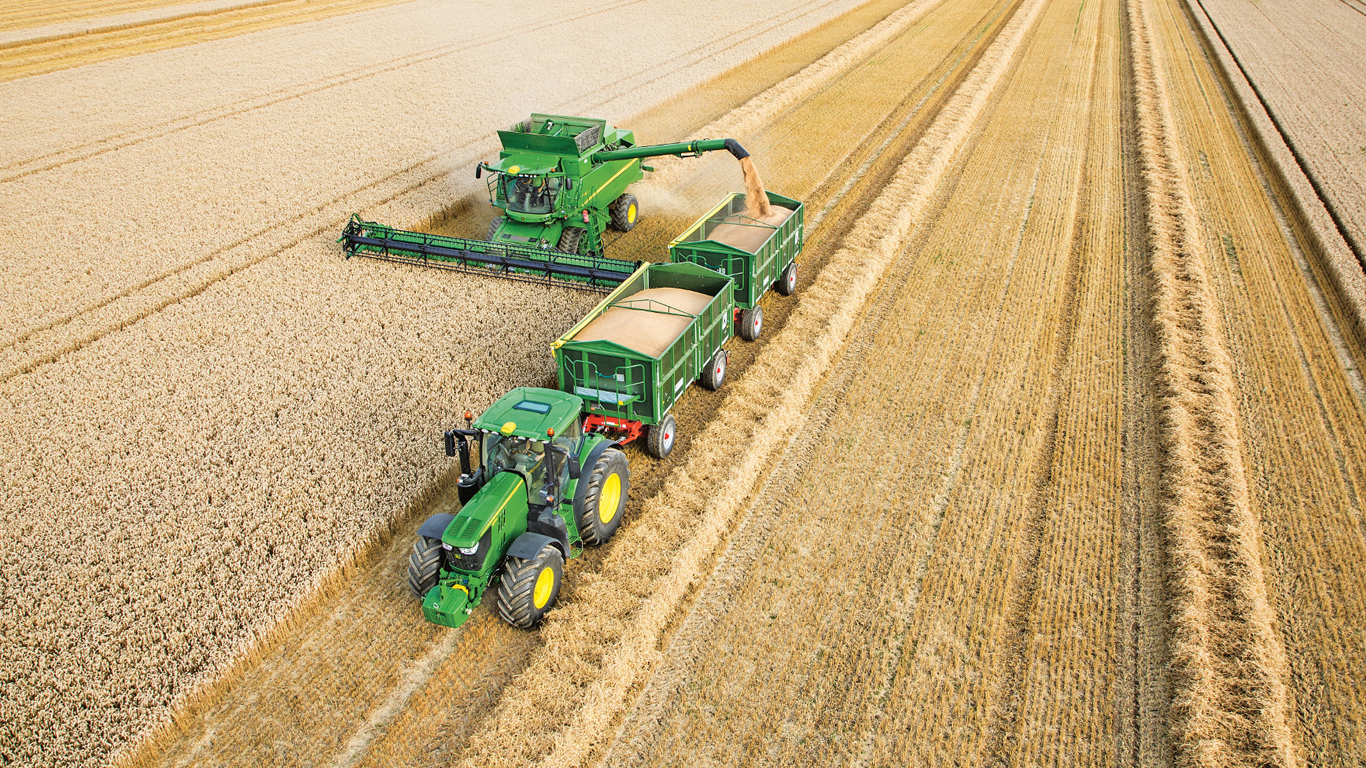Harvesters have a long history at John Deere. The company entered the reaper-binding industry as early as the beginning of the 20th Century. These machines cut the still green grain and bound the stems into bundles or sheaves. These were then collected and threshed six to 10 days later. With a reaper-binder, a person with four horses could harvest 2-2.8ha in a day. John Deere produced around 33,000 horse-drawn harvesters for mowing, raking and tying during the First World War. But the big step towards creating the machine that combines all harvesting steps was supposed to take a few more years.
1927:Combined harvesting
John Deere’s first combine was still partly horse-drawn, but for the first time it incorporated all harvesting methods in one machine – from cutting to threshing. The firm had carefully considered tackling this technical and economic challenge, as Charles N Stone, former managing director of the harvesting division, wrote: “Entering the combine business is a big undertaking. We are well advised that it is better not to enter the business at all than to enter it half-heartedly.”

Interaction between man, machine and horse: Combine No 1 integrated all harvesting methods in one machine for the first time.
1935: The best combine on the market
The No 36 hillside combine set the next major milestone. Since the machine could be used in many regions, it quickly conquered the market and stayed in the range until 1951 – although the No 36 was still partly drawn by horses.

Because of the incline: The No 36 hillside combine won over farmers in many regions and remained in the range until 1951.
1946: Drive it yourself!

Combines
Benefit from tremendous throughput, extremely low broken grain, high-performance harvesting attachments and spare parts delivery within 24 hours.To the combines
The real deal came 11 years after Model 36: Series 55 was the first self-propelled combine. And the first to place the operator centrally at the top of the machine, with the grain tank and engine behind – an arrangement that has proven itself to this day. This setup ensured both a better weight distribution and a clean, quiet operation. The selective speed control, which allowed the operator to regulate the speed up to 17km/hr, was also innovative.
The fifties: The largest self-propelled machine
From 1954, the No10 corn head cutterbar allowed farmers to cut, skin and clean corn with one machine for the first time. This meant that up to 8ha could be harvested every day. And just three years later, John Deere launched the world’s largest self-propelled combine: Model 96. The machine, which was also available in in a hillside version, sold nearly 40,000 units by 1969.

The first self-propelled combine from the 55 Series – shown here with a No 10 corn head cutterbar.
1970: Flexible attachment
In the 1970s John Deere started introducing five new combine models: A trailed model and four self-propelled models. What they all had in common was the use of the ”Quick Tatch” system, which made it very easy to change the different harvesting attachments for various types of grain.

The one with ”trick without kink”. The T-Series from John Deere sets standards in terms of crop flow.
The nineties
In 1992, John Deere had another triumph in the combine market: The CTS was the first hybrid combine worldwide. When the patent protection expired, all other manufacturers followed suit. Shortly before the turn of the millennium, another performance boost followed with the STS single rotor combine: The Single Tine System enabled more throughput with less power consumption.

The first hybrid combine in the world: The CTS from John Deere. A role model for all other manufacturers.
The new millennium
In 2007, the T-Series was launched with an extra-large, active separation area and ”the trick without kink”; a new crop flow system above the turning drum for maximum straw and grain quality. This is still unique among straw walker combines. Along with the wide range of cutting units, the T-Series delivers outstanding threshing results on any terrain and any crop. Three years later, the 500,000th self-propelled combines came off the factory

The one with ”trick without kink”. The T-Series from John Deere sets standards in terms of crop flow.
The automated combine
In 2015, John Deere was awarded a silver medal at Agritechnica for its Active Yield System; which automatically calibrates yield detection, and for the ICA2; the automatic combine adjustment system with two cameras to monitor the clean grain and tailings elevators for broken grain detection. This technology went into series production with the S700 in 2017.

The S-Series comes as standard with the award-winning Active Yield, automatic calibration and ICA2 systems.

